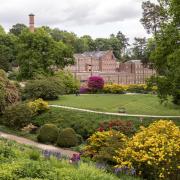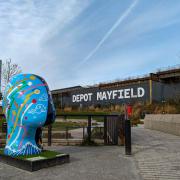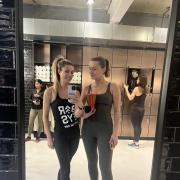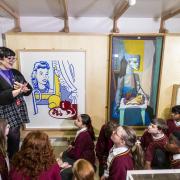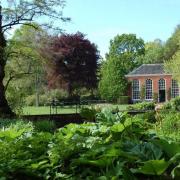John Ireland was a boy from Bowdon who grew up to become one of our country's finest composers. But his life was far from ideal WORDS BY ROBERT BEALE
Not many composers of the first rank were born in the north west of England, but one of Britain’s greatest in the first half of the 20th century was – John Ireland. This month, June, is the 50th anniversary of his death: his life began in Bowdon.
If nothing else, it’s a hymn tune that brings John Ireland’s name to mind now. ‘My song is love unknown’ (the words are by Samuel Crossman, from the 17th century) was composed in 1920 and is an epitome of one side of his genius … deceptively simple, skilfully constructed and deeply felt.
There’s much more to his work, in his church music alone, where his anthem, Greater Love Hath No Man, is still prized, and his complete service settings are very fine. And we might add The Holy Boy – another Ireland piece known well beyond specialist circles, as it became a Christmas favourite, with words added in 1941 to what was originally a piano piece.
These Things Shall Be, for baritone, chorus and orchestra, was written for the 1937 Coronation; his orchestral music includes A Downland Suite, A London Overture and the ‘symphonic rhapsody’ Mai-Dun; notable in his chamber music are two violin sonatas, a cello sonata and a Fantasy Sonata for clarinet and piano; and his piano music and songs (including his version of Masefield’s Sea Fever), are still very much alive.
As for John Ireland the man, and his Cheshire childhood, we know less than we’d like to. It was a time when private sorrows were kept private. His father, Alexander, was owner and editor of a weekly quality newspaper, the Manchester Examiner. Ireland’s mother, Annie, was Alexander’s second wife and 30 years his junior. They lived in a large house (now divided into flats), having moved in 1871 from ‘Alder Bank’ in Ashley Road, Altrincham.
Alexander had a son, also Alexander, by his first wife, and Annie bore him Lucy, Alice, Walter and Edith between 1866 and 1873. But John’s father was 70, and his mother 40, when the composer-to-be was born: he was a lonely little boy.
He was closer to his mother – an author herself – than his father, and would reminisce in later life about writers who visited the family home (including Ralph Waldo Emerson), and there is no doubt that he grew up with a wide knowledge of literature, inspiring much of his music. There is a photograph of him at a local ‘dame school’, but his formal education must have been limited. He later took his Durham degree of Mus. Bac. (as did many of his time) by submission of a composition.
Like his sisters, he learned to play the piano, and, he said, tried to compose, though he’d had no lessons in doing it. In 1893, aged 13, he was enrolled at Leeds Grammar School, but by September that year was in London and joined the Royal College of Music. His mother died just afterwards, and his father a year later – events which clearly left him free to choose his own destiny. He inherited enough to live on and made London his home for much of the rest of his life.
He’d enrolled at the RCM as a piano student, but his talents as a composer were recognized: he gained a scholarship and was taught by Stanford, one of the greats of the age, and later returned (in 1923) as the college’s Professor of Composition. He was a talented organist and held posts in several London churches. His second violin sonata, premiered in 1917, was a major success, and a steady stream of compositions followed it.
Ireland’s music has a passion and yearning quality that have been linked to his sexuality, and it’s clear that his deepest feelings included homo-erotic ones. The inspiration of The Holy Boy, for instance, was a choirboy called Bobby Glassby, and he had a bust of the boy in his studio.
As was frequent enough at the time, he and the curate of one of his churches would take choirboys away for a summer holiday, and he formed close friendships with some of them – a few lasting for years. There is no surviving evidence that any became actively sexual, though. He had female friendships as well, and in 1926 married a student called Dorothy Phillips, but this union was dissolved nearly two years later for non-consummation.
He also made a prot�g�e and associate of a young pianist-composer at the RCM called Helen Perkin. In his later years he shared his home with a devoted housekeeper, Norah Kirby. He lived briefly on Guernsey (until evacuation in 1940), in Banbury, Saffron Walden, and finally in Washington, West Sussex.
In many ways a tortured soul – a result of that lonely upbringing in Bowdon, we might surmise – his pain was the grit that produced pearls.
Cheshire Life would like to acknowledge the assistance of the John Ireland Charitable Trust and Lewis Foreman in supplying images for this feature.
JOHN IRELAND FACTBOX
Ireland was born on August 13th 1879 at Inglewood, in St Margaret’s Road, Bowdon. He died on 12 June 1962.
His father was 70, and his mother 40, when he was born, and both died within a year of his joining the Royal College of Music in London, aged 14.
Julian Lloyd-Webber has placed him among the top five British composers to emerge from the Edwardian era (Vaughan Williams, Holst, Delius and Bridge being the others).
His music ranges through choral, orchestral, chamber, song, organ and piano genres, with over 200 published pieces and around 400 CDs already made representing his work.
He achieved literally overnight fame with the premiere of his second violin sonata in March, 1917.
His own pupils included Benjamin Britten, Richard Arnell, E J Moeran and Humphrey Searle.
The print version of this article appeared in the June 2012 issue of Cheshire Life
We can deliver a copy direct to your door – order online here





